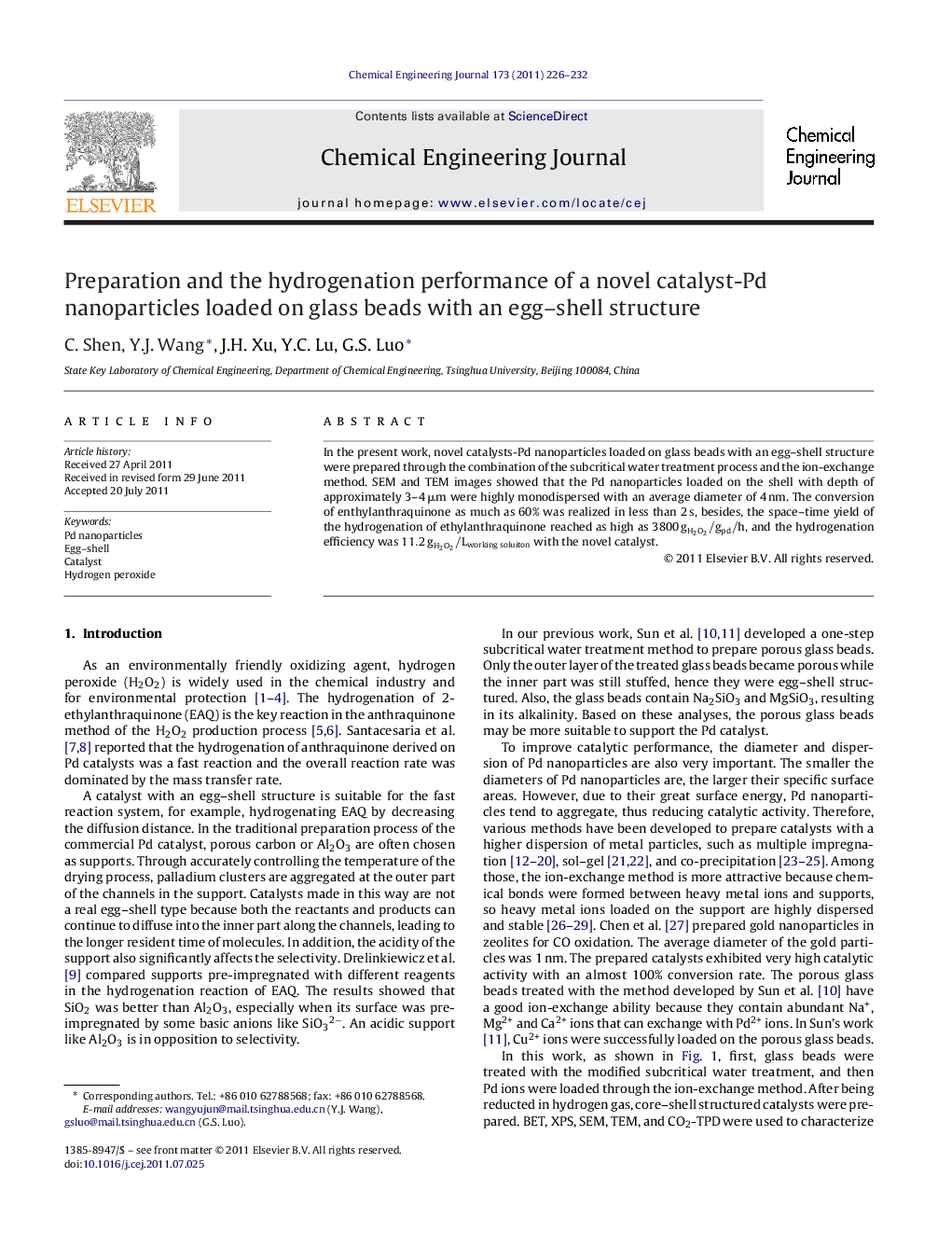| Article ID | Journal | Published Year | Pages | File Type |
|---|---|---|---|---|
| 150657 | Chemical Engineering Journal | 2011 | 7 Pages |
In the present work, novel catalysts-Pd nanoparticles loaded on glass beads with an egg–shell structure were prepared through the combination of the subcritical water treatment process and the ion-exchange method. SEM and TEM images showed that the Pd nanoparticles loaded on the shell with depth of approximately 3–4 μm were highly monodispersed with an average diameter of 4 nm. The conversion of enthylanthraquinone as much as 60% was realized in less than 2 s, besides, the space–time yield of the hydrogenation of ethylanthraquinone reached as high as 3800 gH2O2/gpd/h3800 gH2O2/gpd/h, and the hydrogenation efficiency was 11.2 gH2O2/Lworking soluiton11.2 gH2O2/Lworking soluiton with the novel catalyst.
Graphical abstractNovel catalyst-Pd nanoparticles loaded on glass beads with a core–shell structure were prepared through the combination of the subcritical water treatment process and the ion-exchange method. The prepared catalysts were packed in a tubular reactor and they showed better performance in the hydrogenation of 2-ethylanthraquinone compared with those of the commercial production or of the works in relevant literature.Figure optionsDownload full-size imageDownload as PowerPoint slideHighlights► Novel catalyst-Pd nanoparticles loaded on glass beads with an egg–shell structure were prepared. ► The conversion of enthylanthraquinone as much as 60% was realized in less than 2 s. ► The space–time yield reached as high as 3800 gH2O2/gpd/h3800 gH2O2/gpd/h. ► The hydrogenation efficiency reached 11.2 gH2O2/Lworking soluiton11.2 gH2O2/Lworking soluiton.
